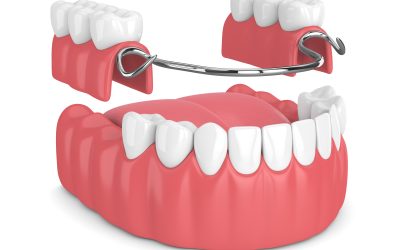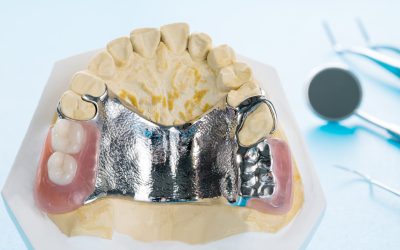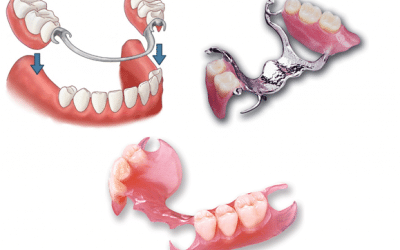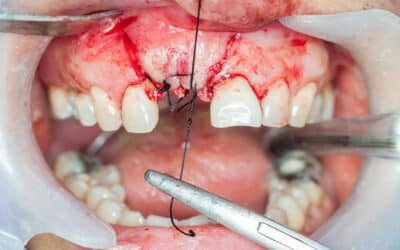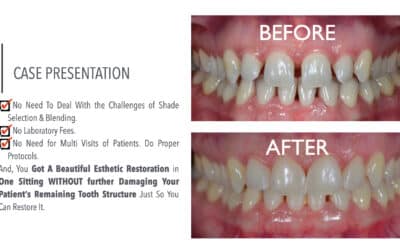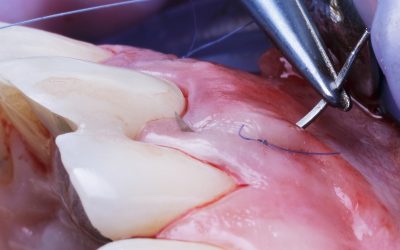Do you know that a recovered CoVid-19 patient can have a relapse? Will you be willing to do a dental treatment with a recovered CoVid-19 patient 1-5 days after the said recovery? Do you know that under our laws we cannot be discriminatory to our patients just because they are contagiously sick? So, what are the guidelines we need to follow if we really need to do dental treatment for a just recovered CoVid-19 patient? Find out and Read this post for FREE at DMD cEnter.
Dental Treatments Journals
Retentive Parts of Removable Partial Dentures
Removable Partial Dentures seem to be a dental treatment of the past with the surgence of many options to replace missing teeth such as fixed bridge and implants. However, this is still a viable option especially if the patient has a limited budget and the concern is minimally invasive style of treatment. In order that RPD to really work and not cause damage at a later time to the abutment teeth and its surrounding tissues, we need to be aware of its parts, its features and benefits. One of those parts is the clasp that provide direct or indirect retention for the denture. So, let’s delve to review the aspects of the clasp, functionalities and various designs, so, if we do need to use RPD as an option for our dental treatment, we will not provide a disservice to our patients.
RPD Major Connectors Review
Do you design your own Removable Partial Dentures or do you allow your dental laboratory technician to do it for you? How do you define your design to make sure stability, proper distribution of force, longevity and comfort are provided properly for an effective appliance and replacement of missing teeth for your patient? Let’s refresh our memory and get into the different classifications of major connectors and more information about them, so, we can take control of our design on our RPD for our patients with much confidence.
Removable Partial Denture: Review On Its Classification
Do you still do removable partial dentures in your dental practice? Or, do you totally just do fixed bridge? It is an undeniable truth that removable partial dentures (RPD) are the most affordable tooth replacement and much more minimally invasive than fixed bridge. However, in esthetics and patient’s comfort, removable partial dentures are quite limited and challenging, but, at the end of the day due to cost flexibility of RPD, it is still the best choice for multiple tooth replacement. Thus, DMD cEnter will provide a short review of its classifications to remind us what can be the best RPD base on classification will be good to our patients at their specific case.
Guide on Tooth Extraction After Care
Did you just have tooth extraction? Was your dentist able to provide you the proper guide after your tooth extraction? Are you a parent or love one trying to guide your child or love one what to do after having tooth extraction? Are you afraid that after tooth extraction you’ll be down and not able to work? What to do for the wound after tooth extraction to heal fast? Are you wondering the answers to these questions? Well, DMD cEnter would like to give you a guide on the after care tips after tooth extractions, so, read this post. However, this guide doesn’t remove the need for you to consult your dentist if you have untoward feelings, signs and symptoms after your tooth extract. At the end of the day, it is always safe to consult your dentist.
Suturing for Oral Surgical Success
Do you still remember all the suturing techniques? We know not all dentists practice oral surgery. However, there’s a reason why we all learned the basics in case of emergency and even just to do simple dental treatments that may require our best effort to do sutures that will encourage proper healing and successful treatment of our dental case. Let’s go back and review the different suturing techniques we may need to apply either on our daily practice as an oral surgeon, periodontist and implantologist or being just a general practitioner who do everyday our best to deliver quality and safe treatments to our patients.
Fact or Fiction: Gargling Water for Alternative Dental Treatment
Do you believe on giving alternative natural treatments? Do you advice them to your patients? If so, what alternative treatments do you advice? If not, why? Alternative or using alternative natural ingredients for dental treatment to address dental problems is quite controversial. This is also not inclusive on dental issues but on medical as well. It is very difficult for dentists to address oral problems via natural ways as we are trained to do only evidence-based treatments. However, there are cases that we may advice some natural ways of addressing dental conditions and one of these type of natural ways is gargling with salt water. Let’s discuss this and see if it does work to address or at least provide relief if not actual treatment to certain oral conditions.
Minimally Invasive Diastema Restoration with Prefabricated Sectional Veneers
Are you tired of figuring out the shade selection in multi-layering technique? Are you struggling on how you can finish your indirect restoration cases without the need of your patient to visit your clinic again at least 2x more and increase more chances of you, your patient and your staff for CoVid-19 exposure? Are you damaging more of your patient’s tooth structure just so it can accommodate your treatment plan? Are you just stuck to remain on what you know rather than what’s really best for your patient as you don’t know other treatment alternatives? If all your answer is “Yes”, then, read this case presentation by Dr. Claudio Novelli with a private practice at DENS Centro Medico Lombardo, Italy with several years of experience in doing Cosmetic Dentistry the alternative way who has generally shared with DMD cEnter his published article at MDPI Dentistry Journal.
Learn how he does it.
Guide to Suturing Materials for Surgical Success
Have you ever failed in your treatment not because you did the wrong procedure but because you used the wrong material or instrument or equipment for the procedure? It is a given fact that dentists majorly cannot treat without materials, instruments and/or equipment to use. Thus, it is not only necessary for us to know the basics of the procedure but the basics of what and how these materials, instruments or equipment we will use in the given procedure. This is more so critical in surgical procedures. It may sound banal and inane but the wrong handling of the suturing needle can actually cause the failure of suturing the wound properly and can affect the healing process. Thus, DMD cEnter after providing you the basic techniques of suturing is giving you the basics of the materials used for it.
The Digital Place To Be For The Dental Community
As Dentists, do you want to enhance even better your dental skills & techniques? Do you want to have opportunity to earn and learn?
As Patients, do you want to find the right dentist for you?
As Entrepreneurs, do you want more exposure in your market and business solutions?
If the Answer if YES


